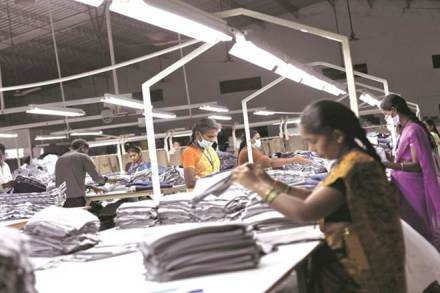By Ruchin Sodhani
As operations consultants, we visit prospective clients in several northern industrial towns to offer advice. Some of these businesses are doing well and want to do better. Many more are embattled manufacturers, overtaken by economic events. They feel, not without reason, that their businesses are in terminal decline. They see the need to change, but are locked into operational patterns that are hard to break and can turn the likely into the inevitable.
We visit a steel foundry. It is one of the larger foundries among its kind, with yearly revenues of Rs 100 million. The industrial shed is spread over 100,000 square feet, with two induction furnaces at one end and sand-casting and machining spread over the rest. In poor light, half-clad workers carry molten metal around in buckets, phosphorescent orange droplets flying in the air like miniature pyrotechnic displays.
The firm’s largest selling products are steel castings for diesel generator sets. If there has been one casualty of improved electricity situation in the state, it is this industry. The owner says business has fallen 70% over the last five years, and he knows this market is going to wither away.
We remark that when the firm has little control over input costs and product pricing, one obvious source of relatively quick value creation would be improved productivity. The owner shrugs; he doesn’t care how many workers are employed, how much inventory is locked into works in process, or what the rejection rates are.
He has outsourced the entire operation to a contractor, who is paid by the daily throughput tonnage, minus the rejections. How many men he uses, what their skill levels are, and what the machine utilisation is are the contractor’s lookout.
But low productivity eats up value, whether in your books or the contractor’s, we say. If we can get the contractor to be more productive, the value created could be split between him and you, we tell the owner. No, he says. We don’t have the capacity to implement a plan like this.
The foundry’s management consists of five people: himself, two accountants and two supervisors who have risen through the ranks by dint of the years they spent ferrying buckets of molten metal. They just track how many tonnes of raw material has passed through the furnaces in a day. So, we have no control over processes, or the ability to change them, says the owner. The contractor does not care because he runs half the foundries in this town the same way and is quite satisfied. Besides, he too does not have the managerial muscle to affect any process changes. Things are running on momentum, and we cannot break that.
This seeming mindlessness has a pattern that repeats itself across industries like garments, paper and plastic products and chemicals.
For decades, the market demanded product of a certain quality and no higher. Labour was cheap, while skilled supervisors and managers were relatively expensive and hard to find (as they are now). The problem of finding capable supervisors is worse in smaller towns, as whatever talent our education and skilling systems produce is vacuumed up by larger industries in bigger towns.
The system of contracting out core operations made economic sense. A contractor who handles operations of multiple foundries has a scale unmatched by any single foundry owner. In low-quality, low-margin products, there is little value to be added through better processes.
There is demand for higher quality castings, acknowledges the foundry owner. However, to meet those standards, he must upgrade the furnaces, moulds, machines, skills and processes. And by now, new suppliers have sprung up around the big industries that demand complex, quality products. Breaking into that market will require capital and operational capabilities that he does not have.
All in all, he is reconciled with fading away. The jobs he creates today are low-skill, low-paying. The geese of the ‘flying geese’ paradigm (where an advancing economy, like the leading goose in a V-shaped formation, leads relatively backward economies towards ever higher technological levels, leaving older technologies to the followers) have flown past him.
That’s why, when we envision an industrial future where SMEs (small and medium enterprises) create millions of jobs, we should discount much of our current SME base. For India’s manufacturing aspirations to come true, we should consider not just how much we must ‘add’ to our SME base, but also how much of it will die and will need to be replaced. We should expect large geographical and sectoral shifts as India industrialises and finds its areas of competitive advantage, and prepare to deal with the consequent disruption.
There is little prospect of revitalising many of our existing SMEs even through policy intervention. Multiple government schemes (like the one that aims to address the productivity issue through lean manufacturing, where MSMEs can hire consultants with 80% of the fees being paid by the government) have made no dent, because they aren’t entirely relevant.
The Indian Mittelstand will probably emerge from a new generation of manufacturing SMEs, ones creating complex, high-quality products, achieving scale by supplying to technologically advanced industrial clusters both in the country and outside it. The government would do well to keep this in view when allocating its capital and designing policies for development and promotion of SMEs.
-The author is managing partner, Zen Projects, a consulting firm ruchin@thezenprojects.com
